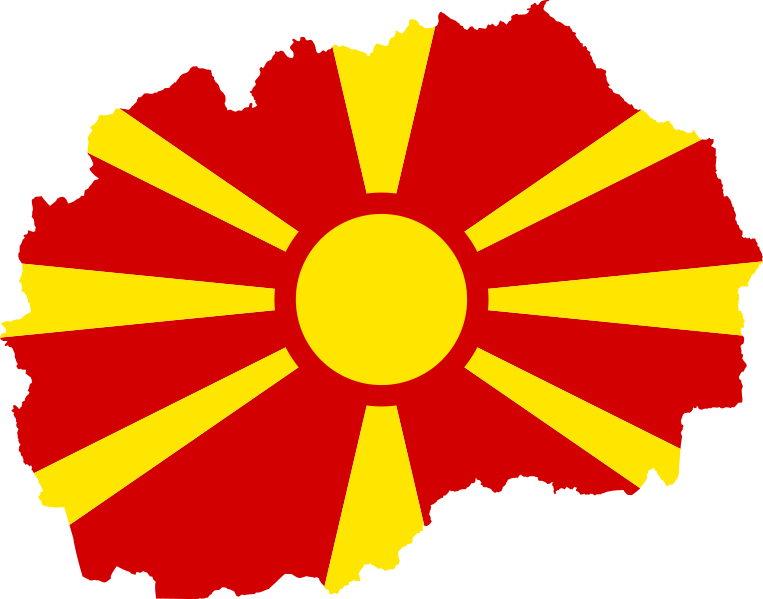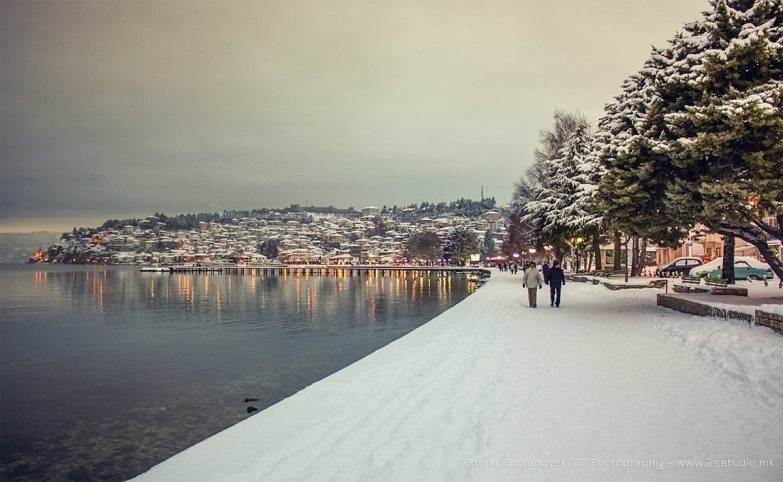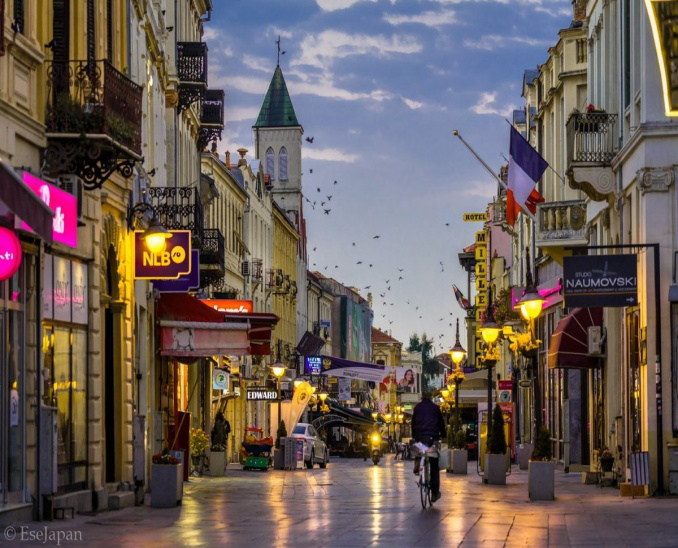REPUBLIC OF NORTH MACEDONIA
The Republic of North Macedonia, is a country of the south-central Balkans. It is bordered to the north by Kosovo and Serbia, to the east by Bulgaria, to the south by Greece, and to the west by Albania.
- Capital and largest city: Skopje
- Official language: Macedonian
- Area: 25 713km2
- Population: 2 103 721
- Government: Unitary parliamentary republic
- Currency: Macedonian denar (MKD)
- Time zone: UTC +1 (CET)
Summer (DST): UTC +2 (CEST) - Driving side: right
- Calling code: +389
- Internet TLD: .mk
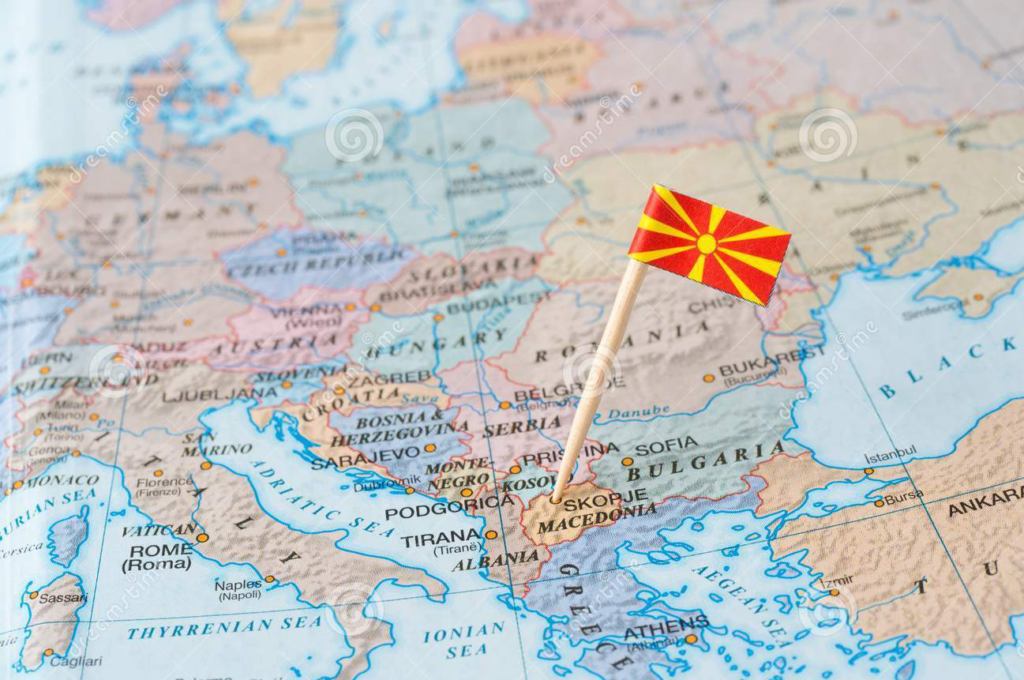
The Republic of North Macedonia is located in the northern part of the area traditionally known as Macedonia, a geographical region bounded to the south by the Aegean Sea, to the west by Lakes Prespa and Ohrid, to the north by the mountains of the Skopska Crna Gora and the watershed between the Morava and Vardar river basins. The Pirin Mountains mark its eastern edge. The Republic of North Macedonia occupies about two-fifths of the entire geographical region of Macedonia. The rest of the region belongs to Greece and Bulgaria. Most people with a Macedonian identity also refer to the region that constitutes North Macedonia as Vardar Macedonia, the Greek part of Macedonia as Aegean Macedonia, and the Bulgarian part of Macedonia as Pirin Macedonia.
Geologically, North Macedonia consists mainly of heavily folded ancient metamorphic rocks, which in the west have been eroded to reveal older granites. In the central region are found sedimentary deposits of more recent age. Traversing the country from north to south is a series of active fault lines, along which earthquakes frequently occur. The most severe of these in recent history occurred at Debar in 1967. Skopje was largely destroyed by an earthquake in 1963. The mobility of Earth’s crust has also created two tectonic lakes, Prespa and Ohrid, in the southwest and has resulted in the formation of several mineral springs and hot springs.
North Macedonia is largely mountainous, with many peaks rising above the tree line at 6 600 feet (2 000 metres) above sea level. The highest elevation is at Mount Korab (9 030 feet, or 2 752 metres) on the Albanian border. Near the Shar Mountains in the northwest, the country is covered with forest. Where this has been cleared (and often in the past overgrazed), the thin skeletal soils have been subjected to dramatic erosion and gullying. There are also several broad and fertile valleys that provide good potential for agriculture.
North Macedonia stands at the junction of two main climatic zones, the Mediterranean and the continental. Periodically, air breaks through mountain barriers to the north and south, bringing dramatically contrasting weather patterns; one example is the cold northerly wind known as the vardarec. Overall, there is a moderate continental climate: temperatures average in the low 30s F (about 0 °C) in January and rise to the high 60s and 70s F (about 20–25 °C) in July. Annual precipitation is relatively light, between about 20 and 28 inches (about 500 and 700 mm). Rainfalls of less than 1 inch (25.4 mm) in the driest months (July–August) rise to nearly 4 inches (about 100 mm) in October–November. Because of differences in local aspect and relief, there may be considerable variation in the climate, the eastern areas tending to have milder winters and hotter, drier summers and the western (more mountainous) regions having more severe winters.

The mountainous northwestern parts of North Macedonia support large areas of forest vegetation. On the lower slopes this is principally deciduous woodland, but conifers grow at elevations as high as 6600 feet (2000 metres). Some areas of forest have been cleared to provide rough summer pasture. The forests support a variety of wildlife, including wild pigs, wolves, bears and lynx. The dry and warm summers result in an abundance of insect life, with species of grasshoppers much in evidence, along with numerous small lizards.
The population of the Republic of North Macedonia is diverse. At the beginning of the 21st century, nearly two-thirds of the population identified themselves as Macedonians. Macedonians generally trace their descent to the Slavic tribes that moved into the region between the 6th and 8th centuries ce. Albanians are the largest minority in the Republic of North Macedonia. Albanians form majorities in some 16 of North Macedonia’s 80 municipalities. Other, much smaller minorities (constituting less than 5 percent of the population each) include the Turks, Roma, Serbs, Bosniaks, and Vlachs (Aromani). The Turkish minority is mostly scattered across central and western North Macedonia, a legacy of the 500-year rule of the Ottoman Empire. The majority of Vlachs, who speak a language closely related to Romanian, live in the old mountain city of Kruševo.

Skopje, the Capital of North Macedonia
Home to nearly one third of the entire North Macedonian population, Skopje is a kaleidoscope run wild and a proper European metropolis that rarely sleeps.
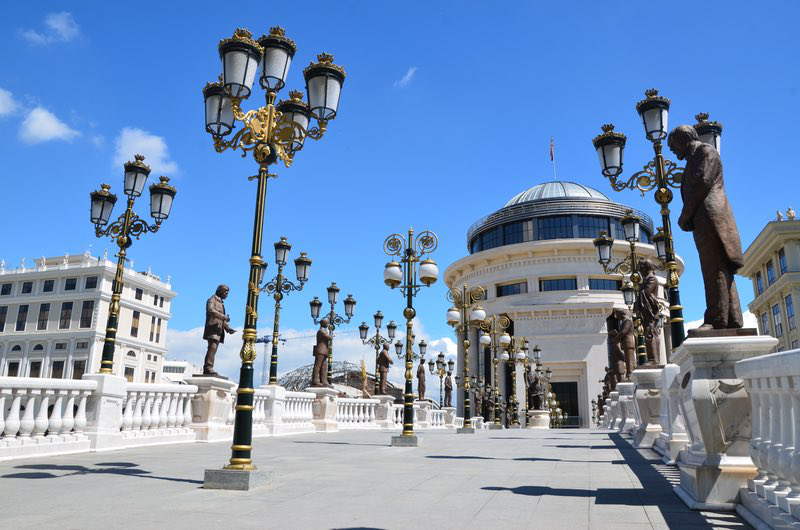
The Old Bazaar
If you are a culture aficionado, North Macedonia makes a great place for your next travel destination. Throughout the centuries, many different civilizations have set their flag on the North Macedonian soil, leaving with them some of their customs, traditions, and architecture. From the Romans to the Ottomans, the cultural influence is still felt even today. The Old Bazaar, perhaps, is the single most captivating attraction where the Ottoman era left a footprint. It offers an abundance of artisan workshops, traditional handicrafts, and plenty of opportunity for leisure and hospitality.
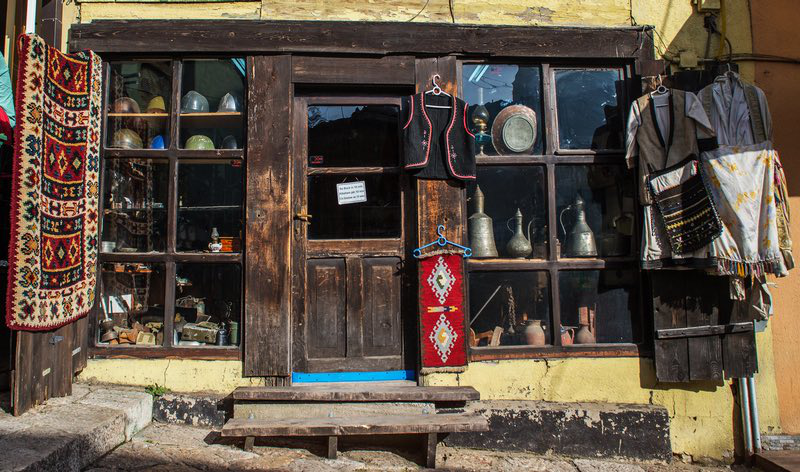
Kale Fortress
Visit the Kale Fortress. Back to the city and the remnants of the past… Kale Fortress was a huge medieval prison, and it is magnificently preserved even today. This architectural landmark overlooks the entire city and you can easily spend an entire afternoon climbing through the towers.
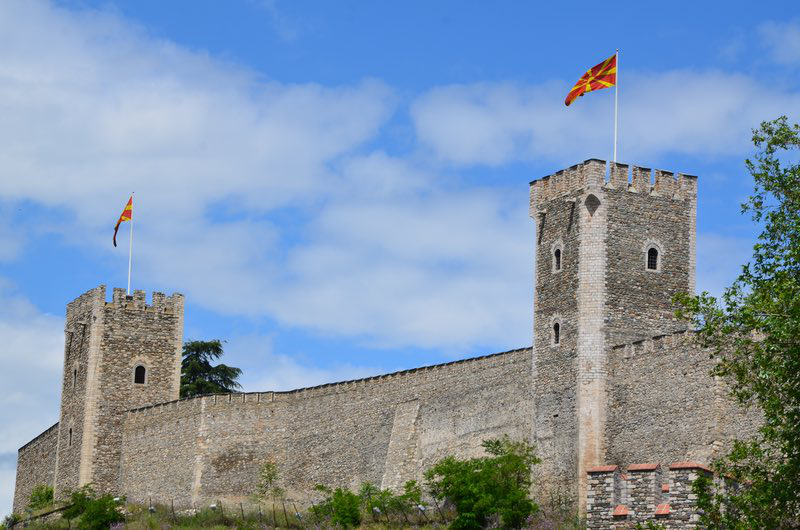
Canyon Matka
Whatever else might be said, Canyon Matka is one of the most underappreciated nature attractions in Europe. The steep cliffs offer some amazing hiking trails on the right, and plenty of panoramic lookouts. Below, however, lays the true beauty. Crystal green, calm, and stretching for miles on end, the river-lake is a perfect spot for kayaking and boat rides. You can spend an entire day here, enjoying the scenery and the monasteries nearby, and finally take a lunch break sipping some Macedonian red wine as you watch the sun going behind the canyon. The terrace on the front is the perfect spot for you to unwind.
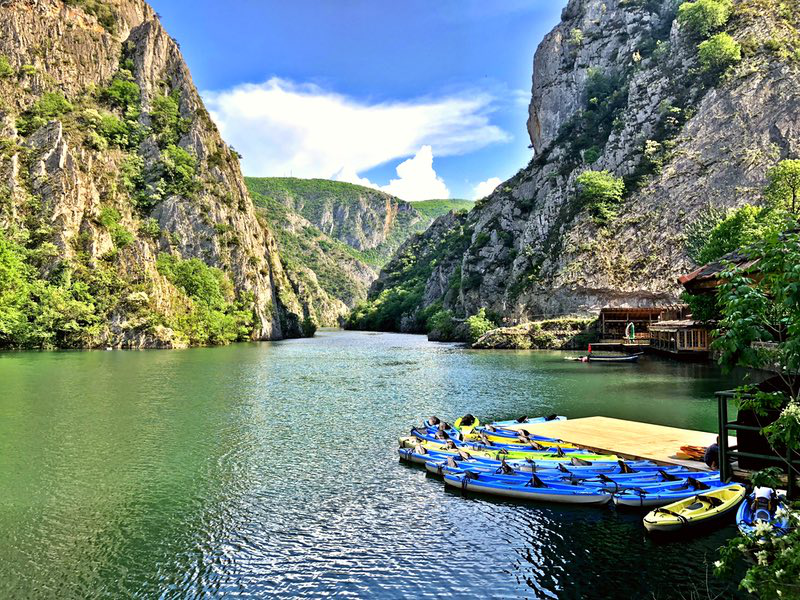
Kokino
This natural observatory is located at a one hour drive away from Skopje. It is a rare sight hidden amidst dense forest. Take the road From Kumanovo, and follow the winding trail till you reach the destination. It is nicely marked on Google Maps, but drive slowly nevertheless. Some say that Kokino is the Stonehenge of the Balkans, since it was a natural observatory many centuries ago, dating back from the Bronze Age. It is one of the most exciting afternoons you’ll ever have.
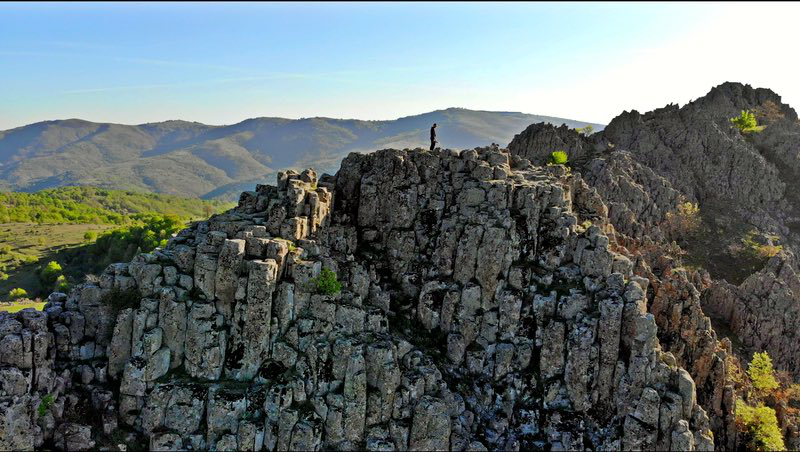
Stobi
Stobi is the best place to visit North Macedonia is around the middle of spring and the beginning of summer. If you are in love with the outdoors, then perhaps you can time your visit a bit later, as summer is ideal for exploration and outdoor fun. The true excitement, however, is in the combination of the outdoors with the historic like Stobi. Located in the middle of the map, and close to the main highway, it is ideal for exploring. Once a mighty settlement of the past, Stobi is now a relatively large excavation site, cataloguing both the Hellenic and Roman period – step inside, and your imagination runs wild.
Heraclea
Equally captivating, Heraclea is another majestic settlement of the past. Suffering the same fate as Stobi, it was nicely preserved to remain one of the most captivating remnants of the Roman era.
Prilep
If you have a map by your hand, you’ll notice the line we are drawing as we are connecting one place to the next. Visiting Stobi and Heraclea, the next stop on your journey is Prilep. This small town is charming and cute, but the real fun is on the very edges. There, several monasteries are dotting the map, and you should definitely visit some of them if you are impressed with the architecture of the Orthodox Church.
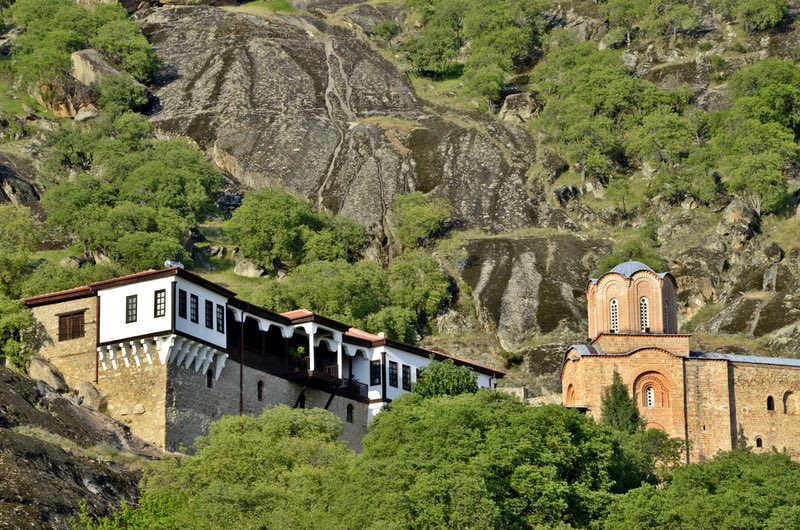
Monastery of Treskavec
Above Prilep, a gigantic hill is home to one of the most iconic Monasteries in North Macedonia. There, embedded within a massive rock formation at the end of a windy road, the Monastery of Treskavec awaits.
Marble Lake
If you are the adventurous type, just follow the short safari-like road exiting the main highway before Pletrav, passing the village of Belovodica. Once you are up the mountain, an unbelievable spectacle unfolds. A white marble amphitheater circles the crystal blue pocket of water below, making it a real sight to behold. You can swim in the lake, or enjoy the sun as it reflects from the magnificent blocks of marble. Just climb up and chill for an hour or two while taking pictures, timelapse photography, and processing the sight.
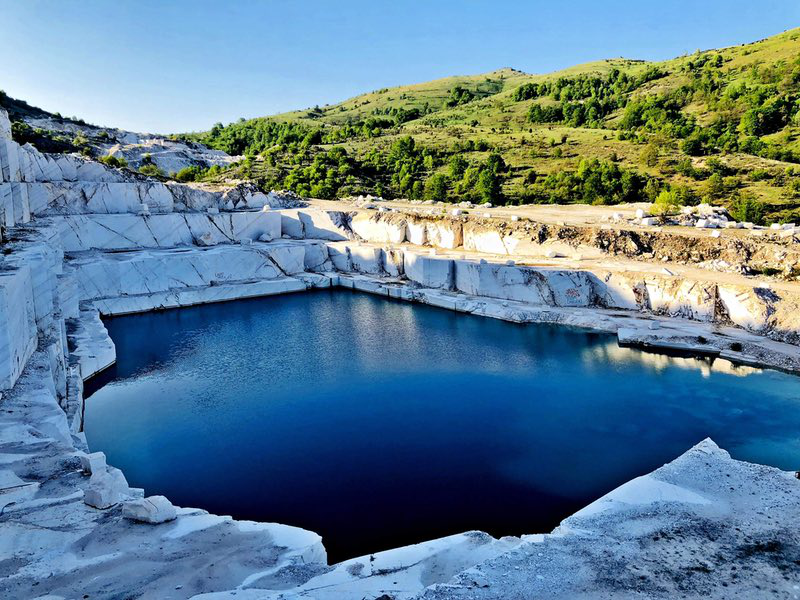
Sopot
Drink Macedonian wine in Sopot. The wineries along the Vardar Valley are home to some of the finest wine in the region. The grape fields will remind you of an Old Italian vineyard or the Californian Napa Valley. You can dine here, stay for the night, and enjoy the region as you wake up in a peaceful nature environment.
Krusevo
Visit the small town of Krusevo. Hidden deep in the mountains, the small town of Krusevo has a lot of history tales to reveal. One century ago, the first Macedonian revolution took place in this very town, rebelling against the Ottomans. The story goes that a small garrison of rebels endured for several days, against a fully equipped Ottoman battalion. Nowadays, Krusevo is famous for the food, and of course the paragliding competitions taking place year after year.
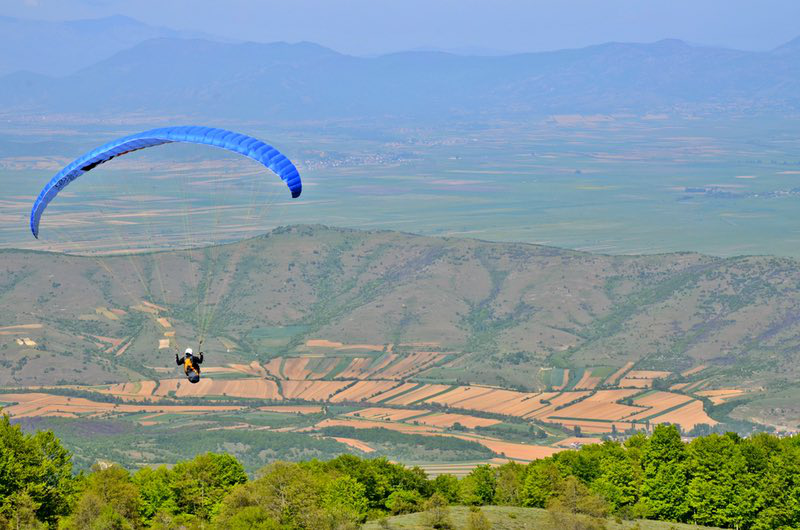
Mavrovo
See the sunken church near Mavrovo. Accessible via the main road passing through Mavrovo, the sunken church is a postcard worthy attraction. If the tide is low, you can even walk inside and explore the interior. The small grassy field in front of the church is ideal for welcoming the sunset, or taking long time lapse shots of the marvel ahead.

Galicnik Wedding Festival
If you are here during the month of July, make sure not to miss the traditional Galicnik Wedding Festival. It will usually take place in the middle of the month, over the course of a weekend. There, Macedonian customs and traditional attire are on full display. But even if you fail to catch the wedding, the road from Mavrovo to Galicnik is a separate spectacle to enjoy. It offers some of the most captivating panoramic views of the entire region.

Ohrid
Visit the town of Ohrid. Whatever else might be said, the town of Ohrid is the pinnacle of the Macedonian experience. If you are set on discovering North Macedonia, Ohrid is a separate category on its own. Filled with churches and monasteries, it’s an equal part culture trip as it is a haven of nature. Two of the most captivating churches are right next to the coast, providing scenic views that will have your cameras snapping pictures left and right. The first is the church of Kaneo, pictured above, and the second is the monastery of Plaoshnik.
Ohrid Lake
Enjoy Ohrid Lake. If you want to combine the cultural field trip with one of the most picturesque lakes in Europe, make sure not to miss a day on the beach. The water is cold during spring and early summer, so the months of July and August are probably the best time for a visit.

Bay of Bones
Discover the Bay of Bones. The Ohrid region is filled with different types of attractions, but few are as captivating as the reconstructed settlement at the Bay of Bones. The original site dates from the prehistoric era, and the newly constructed wooden platform is almost a decade old. You can visit each of the houses and find different artifacts excavated from this very location, while taking pictures of the entire settlement. It is especially beautiful on a sunny day during July.
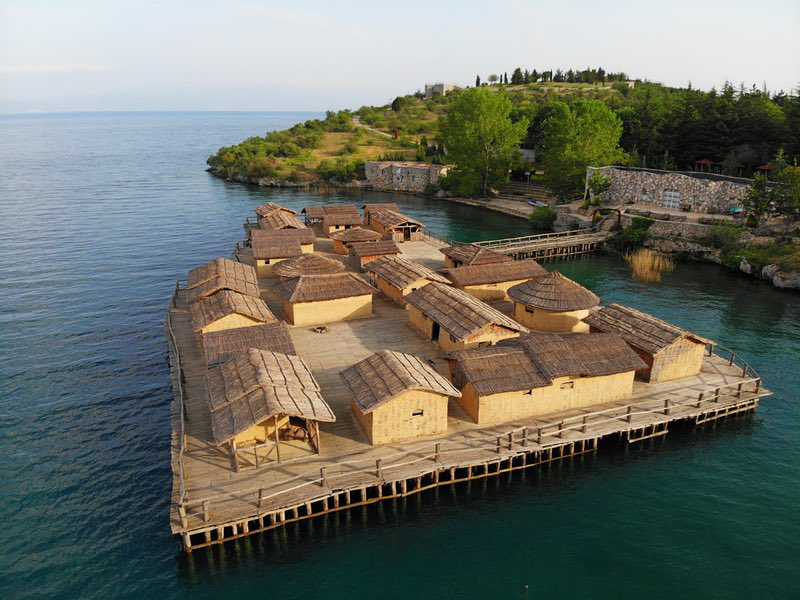
Monastery of Saint Naum
Go to the Monastery of Saint Naum. Following the coast road from Ohrid through the Bay of Bones, you will reach the majestic monastery complex of Saint Naum.

Traditional Macedonian food
Macedonians love to combine organic produce with juicy meat and rich dairy, and the food is a spectacle on its own.
Make sure to taste:
Tavce gravce (Macedonian style baked beans)
Sarmi (stuffed cabbage)
Stuffed peppers
Selsko Meso (pork and mushroom dish)
Ajvar (pepper-based condiment)
Shopska Salad (chopped salad with cucumbers, tomatoes, onions, peppers and white cheese)

Conclusion
You’ll definitely enjoy North Macedonia as it offers plenty of diverse locations to discover. The food is beyond amazing, the people are welcoming, kind, and friendly to show you around.
